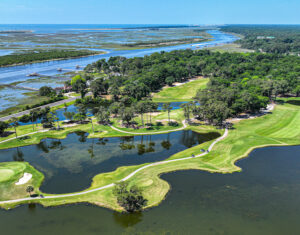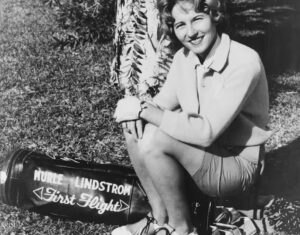Tip Tuesday: How to Use the Claw Grip in Putting
In the fourth part of his most recent series of putting tips, Ted Frick of the Classic Swing Golf School at Legends Golf Resort in Myrtle Beach, S.C. includes one of the series’ key elements (using your dominant eye to confirm your putting lines) as part of how to best use the claw grip for your putting stroke.
Ted Frick:
All right. Here’s series four now in putting. Series one highlighted the dominant eye, to know your dominant eye for aim. Series two got into the different style putters: traditional, mid-sized mallet, and then you’re seeing a lot of these big old mallets now. And the deal with these bigger mallets, which I’m going to do on this series, they’re very face-balanced putters. You will see the earlier putters, boy, there was not much balance throughout the face at all. I mean, just look at the way this toe drops. So that toe drop kind of identified more of a rotation, face rotation. These newer putters that are mallet and face-balanced are also coming with these bigger grips. They are fine. It’s factual. It’s objective. Bigger handles are helping people keep the wrist quieter. Bigger handles are also helping reduce grip pressure. So in series four …
Let me go ahead and recap real quick. In series two, I got into the green. Series three, I got into feet. In this final series, let’s just talk about the eyes. If I had a marker down here and I’m going to use a line on the ball. Well, over 50 percent of all golfers right now, all the boys and the girls, at least 50 percent are using the line on the ball. I have confirmed with my feet. I have confirmed with the grain that this is a left-center putt. I have to confirm that line right now with my dominant eye. If you’re using a line on the ball, you have to step back at this point, you have to close your nondominant eye, which would be my left cause I’m right-eye dominant, and I’ve got to confirm that that line is matched up to that left edge. No, also in a lot of the new modern putters, and this is helping out so many people, you’re seeing alignment aids.
And that’s where you’re finding these putters that have lines on them. It’s a sweet spot line. It’s also an aim line. If your eyes play games with you, I can promise you, I know this for a fact, when you walk in and set up to the golf ball, close your nondominant eye again. You can’t tell underneath the sunglasses, but right now, if I needed help with aim, I would close my left eye and confirm that the line of my putter is matched up with the line of the ball. I don’t want this, my line going one way. And then the putter face going another.
All right, now here comes the claw. All right, big time into the palm of the left hand. The variations of the claw, you see this young boy from Europe, this Tommy Fleetwood using the pencil. Then you see the Justin Rose with two fingers or Phil Mickelson with three fingers. These are variations of the claw. The uniqueness of this grip is it takes the power hand and it negates it. It’s for those of us who are very, very right-side dominant in all facets of our life.
So let’s take a look at this style here. And then what style do you think coach Ted’s been using for the last 15 years? I’d like to hear that response!
All right. Confirming my aim line. Okay. Confirming the line on the putter, matched up with the line on the ball. I’m going to go ahead and go through this ritual. Here goes to that top hand, way in the palm of the hand. Here comes the Tommy Fleetwood pencil, variation of the claw. So now I’m all set up. I’m also a big believer in Dave Pelz and the “17-Inch Rule.”
So what grip do you think I use?



